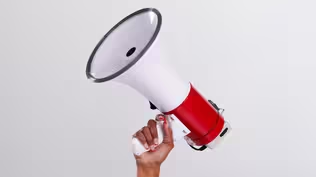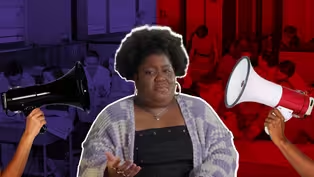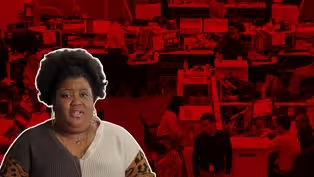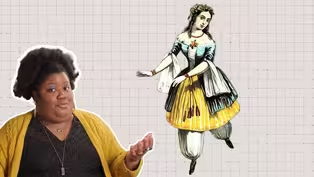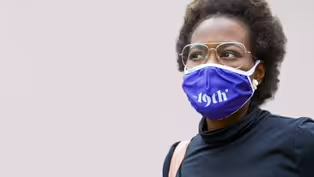
RIP Local News
Clip: Season 25 Episode 11 | 9m 3sVideo has Closed Captions
What are the challenges facing local journalists?
Some of the biggest news stories in our country were revealed by local journalists; from early 20th century lynchings to the Rodney King beating to the murder of Breonna Taylor, local news was there first. But as budgets drop and outlets disappear, this type of coverage is in jeopardy.
Problems playing video? | Closed Captioning Feedback
Problems playing video? | Closed Captioning Feedback

RIP Local News
Clip: Season 25 Episode 11 | 9m 3sVideo has Closed Captions
Some of the biggest news stories in our country were revealed by local journalists; from early 20th century lynchings to the Rodney King beating to the murder of Breonna Taylor, local news was there first. But as budgets drop and outlets disappear, this type of coverage is in jeopardy.
Problems playing video? | Closed Captioning Feedback
How to Watch Independent Lens
Independent Lens is available to stream on pbs.org and the free PBS App, available on iPhone, Apple TV, Android TV, Android smartphones, Amazon Fire TV, Amazon Fire Tablet, Roku, Samsung Smart TV, and Vizio.
Buy Now
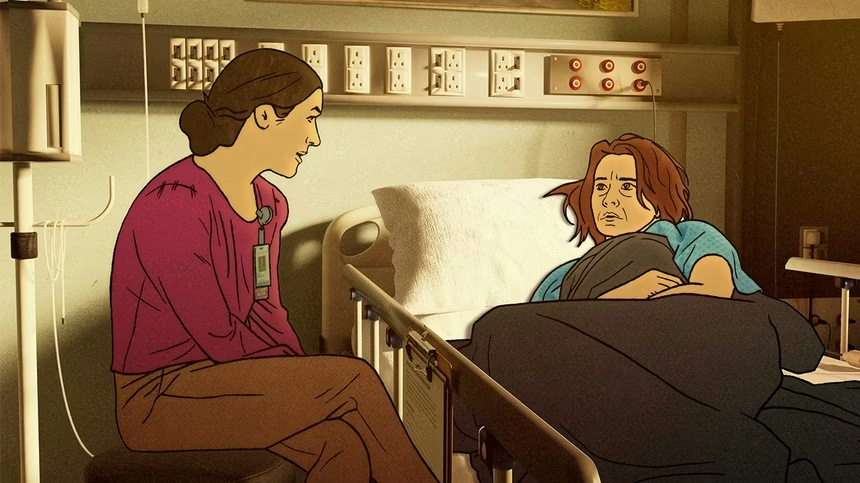
The Misunderstood Pain Behind Addiction
An interview with filmmaker Joanna Rudnick about making the animated short PBS documentary 'Brother' about her brother and his journey with addiction.Providing Support for PBS.org
Learn Moreabout PBS online sponsorship- In March of 2020, a black emergency medical technician living in Louisville, Kentucky was shot and killed during a botched police raid on her apartment.
Her name is one you might have heard before, Breonna Taylor.
In June of that same year, "Justice for Breonna Taylor" was among the rallying cries in thousands of protests against police brutality that sprung up across the country.
Taylor's face was plastered on signs along with the words "Say Her Name," a slogan demanding justice and dignity for victims of police violence, particularly for black women and girls.
But her name and likeness weren't always so ubiquitous.
Without local journalists, we might never have heard about her.
Taylor's story is just one example of how local news can launch movements, inspire protests and change lives.
What important stories remain hidden without local journalism?
When we look at the purpose of journalism, it's important to understand that journalists aren't just responsible for reporting the events of the day.
They take on a much larger role in our society as truth tellers and those who shed light on major issues.
Just look at Kelli Smith of the Dallas Morning News, who recently called attention to a local issue that had large implications.
- [Narrator] Last year I received a leaked email.
It was from inside the Dallas Police Department, and it essentially said 52,000 evidence-related files weren't stored properly.
When evidence in cases is missing, that means any court case related to that evidence could be in jeopardy, and that's what I had started noticing across Dallas.
- From a reporter perspective, we knew that there was more to the story.
- Smith investigated and found that missing or misfiled evidence was jeopardizing and delaying trials.
It left people like Richard Miles, a black man who was wrongfully arrested in 1994, and who would've been exonerated by misplaced evidence, in terrifying limbo.
This is one example of how local news investigations can be pivotal and have impacts beyond just the original story.
Breonna Taylor is another.
There was local coverage in outlets like the Courier Journal and the Atlanta Black Star immediately following the incident.
Then journalist Errin Haines broke Taylor's story to national audiences in May of 2020.
She published the article in the 19th.
The article was co-published at the Washington Post.
In the article, Haines noted that Taylor wasn't getting the attention she deserved, saying the story was being drowned out by COVID news, but was also being papered over due to gender bias.
Crucially, Haines observed that black women are often overlooked as victims of police violence, pointing out that black women are rarely given the hashtags or headlines that had come to be associated with demonstrations against police brutality.
- You know, I could also be a person that this could happen to.
- These examples are urgent reminders of the importance of local journalism, an institution that is sadly in decline.
Haines' work is also an example of the overlap between community-focused reporting and investigative journalism, the kind of story that addresses a rampant but neglected problem in our society.
These stories reach out and grab us because there's an urgency there, a call to action.
They're also the kind of stories that are likely to make the leap from local to national.
As journalist Ida B.
Wells once said, "The way to right wrongs is to turn the light of truth upon them."
It's impossible to discuss the importance of local news without touching on the legacy of investigative journalism, or as President Theodore Roosevelt called it in 1906 "Muckraking".
The dawn of the Industrial Revolution introduced a slew of nooks and crannies for these wrongs that Wells mentioned to hide out in.
Advertising agency spreading lies, gigantic trust-seeking to become monopolies, corrupt meat industries cutting corners on cleanliness, political machines engaging in corruption, these became the new landscape, and people living in cities found it hard to survive, but there were those brave enough to roll up their sleeves and dig around in the mud in their pursuit of exposing the truth.
The muckrakers, journalists willing to put everything on the line for the sake of getting the story, and it wasn't just for the byline.
There was a moral dimension to these stories, an idea that they could be used to lobby for social reform.
Ida B.
Wells wrote stories about the extrajudicial killings of black people at the hands of angry mobs.
Many of them focused on her local community because well, she was writing about people she knew.
She penned several articles as well as a pamphlet, "Southern Horrors Lynch Law In All Its Phases".
Her legacy continued into the Civil Rights Era.
In 1955, a story in Jet Magazine in Chicago about a 14-year-old black child, Emmett Till, who'd been murdered by a lynch mob after a white woman claimed he had made a pass at her, sparked outrage and ignited a larger conversation about race and violence in this country.
The turn towards the national spotlight was aided by Till's mother Mamie Till, and her choice to have an open casket for her son's funeral and her unrelenting commitment to speak about her son's death.
In the next decade, images of children being attacked by police in West Virginia, Alabama, and Mississippi caught national attention.
Images many of us are likely familiar with from history books, images that came to us thanks to the efforts of local journalists.
- Somewhere I read of the Freedom of Press.
- Following the assassination of Dr. Martin Luther King Jr. in 1968, riots broke out in cities across the country.
These were covered locally by journalists, and the stories and images that came out of them quickly entered the mainstream becoming national news.
And in 1991, a civilian took a video of white LAPD officers beating Rodney King, a black man, while allegedly shouting slurs at him.
The civilian George Holliday sold his video to the local television station KTLA, which in turn broadcast that footage and shared it with CNN, where it reached a national audience.
This was the spark that set off the LA riots and was in turn a major springboard for an organized movement against racialized police brutality.
We saw this happen again as recently as 2020 when bystanders pulled out their phones and recorded the death of a black man named George Floyd at the hands of Minneapolis Police in front of a convenience store.
The local videos went viral and the story launched protests and further conversations about police brutality, including protests where one could hear "Justice for George Floyd" and also "Justice for Breonna Taylor".
- [Protestors] Breonna Taylor.
Breonna Taylor.
- When local stories get escalated to the national level, like these examples, there can be a few reasons why.
One is timeliness, another is national impact, or it could be because of novelty, human interest, or conflict.
Much of the news we see on the national level has some combination of these criteria.
The point is the history of local journalism is the history of journalism as a call to action.
People serving their direct communities, telling stories on the ground, and sharing them with broader audiences.
Local news has been pivotal in movements for racial justice as well as economic justice, which makes it all the more upsetting that local news and local investigative journalism are in decline across the country.
Although Americans trust local news over national news, local newsrooms are rapidly disappearing due to budget cuts and fewer full-time positions.
Some areas now only have one local news station and others have zero.
And according to a study from Northwestern, since 2005, the country has lost more than a fourth of its newspapers, 2,500 and is on track to have lost a third by 2025.
It's alarming not only because national news draws so heavily from local news, but also because local news plays a key role in uniting communities and addressing their specific needs.
But despite this decline, there's still hugely important work being done at the local level.
Like the muckrakers before them, there are journalists exposing local corruption, shining a light on larger societal issues in the nooks and crannies that national news coverage simply can't.
Indeed, as history shows us, it's local news that generates the national conversation.
The phrase "all politics are local" has a great deal of truth in it.
And whether you're a star reporter or a journalism student, or just a person with a camera phone and a story to tell, the truth is what we're after.
If you wanna learn more about how the Dallas Morning News uncovered misfiled and lost police evidence, watch the series "Evidence Lost" on the Independent Lens Instagram and YouTube channels.
And if you wanna hear about how the Breonna Taylor story got to the press, check out the documentary "Breaking the News" streaming on the PBS app.
What's your favorite local news outlet?
How do you find out what's going on in your community?
Let us know down in the comments.
♪♪
How Did Opinions Get In Our News?
Video has Closed Captions
Clip: S25 Ep11 | 7m 44s | It's not always easy to spot the difference between facts and opinion. (7m 44s)
Has Journalism Always Been This Stressful?
Video has Closed Captions
Clip: S25 Ep11 | 8m 52s | A mental health crisis has taken shape in our newsrooms. (8m 52s)
How Did This Women-Owned Newspaper Revolutionize Journalism?
Video has Closed Captions
Clip: S25 Ep11 | 7m 8s | How a women-led newsroom blazed a trail for women's rights. (7m 8s)
Video has Closed Captions
Preview: S25 Ep11 | 30s | Women and LGBTQ+ journalists launch news startup The 19th* to combat misinformation. (30s)
Providing Support for PBS.org
Learn Moreabout PBS online sponsorshipSupport for PBS provided by:
